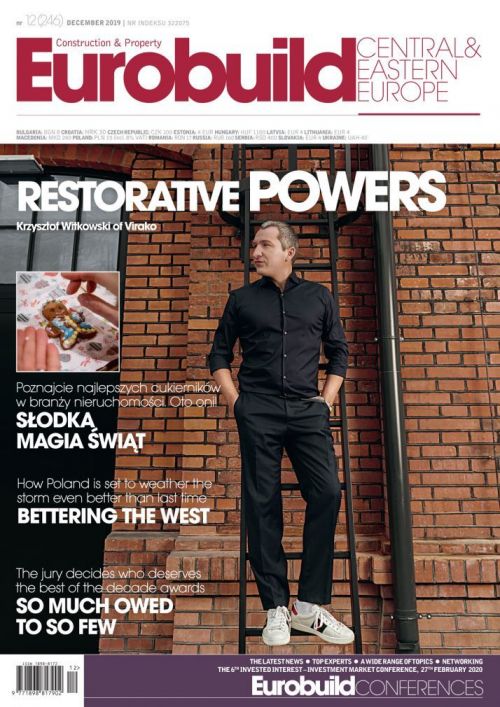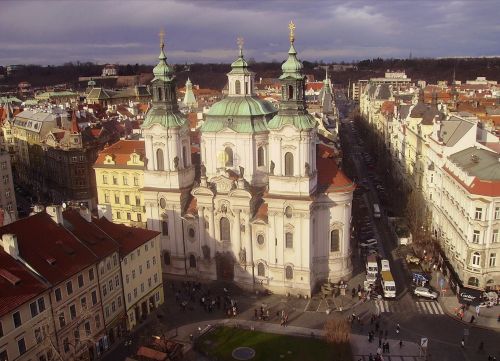Of MICE and hotel management
Hotels
It is difficult to estimate how many hotels with conference facilities now exist on the Polish market. According to hotel consultancy specialist Jacek Piasta, there is no reliable data because there is no agreed definition for what a hotel designed for the MICE (meetings, incentives, conventions and exhibitions) sector actually is. “The term covers small hotels comprising two conference rooms for 15–30 people as well as large professional facilities providing a dozen or more multifunctional modular rooms. There are scores of the latter in Poland and several hundred, if not more than a thousand, of the other type,” explains Jacek Piasta. Kamila Rówińska of the editorial and content marketing department of MojeKonferencje.pl approaches this issue from a slightly different angle. “Three- and four-star hotels predominate in Poland but they are focused on individual guests. Almost 20–30 pct of the hotel market across the country advertises itself as having a range of facilities addressed to business clients,” she points out.
According to the Polish Central Statistical Office (GUS), there were 2,635 hotels in Poland at the end of July 2019, an increase of 1.7 pct over the previous twelve months. Bolesław Kołodziejczyk, the director of the market research and consulting department at Cresa Polska, claims that the vast majority of new hotels are opening in urban locations. “These types of hotels are a response to the growing demand from business clients,” he says. “The scale of business operations in Poland expands every year. Hotels for business are not only about accommodation and business meetings. They are also about integration and conferences, which is why this segment is also being positively impacted by the growth in the numbers of such companies in Poland,” she explains.
“The increasing demand for business hotels is partly down to the growing number of international events and such clients,”
says Agnieszka Topczewska of CBRE
Large cities and their outskirts
It is little wonder, then, that along with the development of the office segment and thus the demand for conference services for tenants, the hotel market is developing primarily in large conurbations. According to Kamila Rówińska, it is the Mazowieckie, Wielkopolskie and Małopolskie provinces that are taking the lead in this respect. Conference rooms are the most sought after in Warsaw, Kraków and Gdańsk. There is also substantial interest in Łódź, Poznań and Wrocław,” she reveals. She does, however, draw attention to the fact that the demand for conference space is also growing in regions regarded as attractive to tourists. “In this respect, hotels and centres in the mountains and on the coast are the most popular, as they allow you to combine business trips with employee integration,” says Kamila Rówińska.
“The increasing demand for business hotels is also down to the growing number of international events and therefore the number of such clients,” adds Agnieszka Topczewska, an expert in CBRE’s hotel department. She provides as an example Gdańsk, where the demand for accommodation services has undergone the fastest growth in the last five years, of 12.7 pct. “Another city worth noting is Katowice, where the average demand increased by 10.7 pct between 2012 and 2017. The UN climate summit has been held there, while the takeover of the management of such venues as Spodek and MCC by a private company has also significantly influenced this growth. The demand for business accommodation is a result of the growth in the number of companies, the increasing activity in the regional office sector and the large fairs and conferences held in these locations,” explains Agnieszka Topczewska.
Easy to reach
All the experts we asked agree that the most important factor determining the choice of venue for a conference or other type of event is a location with convenient transport links and a suitable number of parking spaces. “A hotel with conference functions should first of all be in a good location, such as close to a station, airport or motorway,” insists Agnieszka Topczewska of CBRE. “A large car park with a driveway and spaces for buses is another very important factor,” she adds. Jacek Piasta points out that the conference facilities market has been developing in two ways: “There is still room here for conference hotels in city centres and the suburbs as well as those in tourist areas in regional locations,” he explains. But wherever they are, having perfect access is crucial – whether by public or private transport.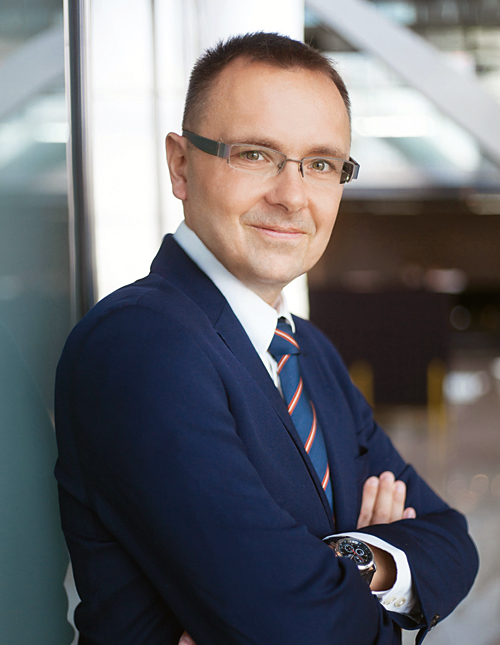
“Business hotels are not only about accommodation and business meetings. They’re also about integration and conferences,” adds Bolesław Kołodziejczyk of Cresa Polska
Small and large ones
Kamila Rówińska explains that the hotels focused on business clients include those that normally contain two to four conference rooms of app. 151–250 sqm (according to the recent ‘Internet Marketing of Hotels and Conference Facilities 2019/2020’ report). “Interestingly, the number of buildings that can boast conference areas of more than 1,000 sqm has recently been growing,” remarks the expert from MojeKonferencje.pl.
“The size of the building in each case is determined by its location,” insists Jacek Piasta. “Kraków, Warsaw and Wrocław can absorb a different kind of hotel than Kalisz, Pleszew or Malbork, a special economic zone, a seaside town or one in the mountains. Each location requires scrutiny and careful analysis,” he points out, explaining that an almost 200-room hotel with ten or more conference rooms can make sense in one place, while a 30–40-room hotel with three or four conference rooms could be an economic success in another.
According to Kamila Rówińska, most companies in Poland are small or medium-sized. This means that most clients are generally looking for small training rooms for up to 50 people.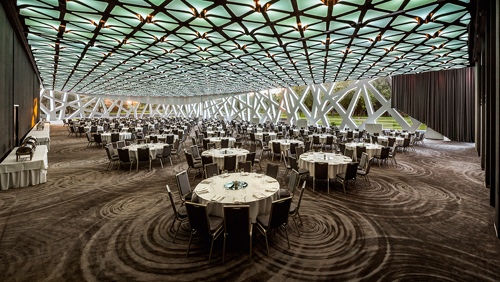
The Narvil hotel in Serock outside Warsaw has 33 conference rooms
What about a bonus?
The specialist from MojeKonferencje.pl also emphasises the importance of the various types of amenities available in conference buildings. “Many clients require facilities with clearly specified amenities, such as those with access to computers or sanitary facilities. Hotels with flexible space, where there is the option of re-arranging the conference area, tend to win out over those with coworking space in this segment,” she explains. “In big cities recently we have also been able to see another growing trend: meetings organisers are now often looking for unconventional venues with a more casual atmosphere, such as those with couches, deckchairs or colourful poufs. These are an attractive option mainly for the creative sectors,” adds Kamila Rówińska.
A hotel focused on business clients and events is not just all about the conference rooms. Additional services and amenities are also important. Agnieszka Topczewska of CBRE believes that having tourist attractions nearby that guests can visit in their free time is an important additional advantage. Furthermore, in her opinion, a good conference hotel should provide its clients with a high quality restaurant or the possibility of using a gym or spa. “This is very important, especially for suburban hotels, where guests might have nothing else to do when the business day is over. Recreational options such as cycling, bowling or horse riding then become a very important advantage. Suburban conference hotels that offer attractive additional services also often attract individual guests at weekends – like families with children,” she says.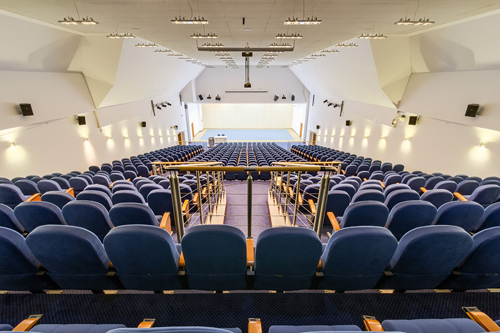
The Ossa in Rawa Mazowiecki is the largest privately run hotel in Poland
Market leaders
The conference hotel market in Poland continues to evolve and events organisers now have a variety of options to choose from. However, there are certain hotels that have enjoyed unflagging popularity for many years. Among the flagship conference hotels in Warsaw, Agnieszka Topczewska highlights the Marriott, Intercontinental and Sofitel Victoria. “Last year this group of hotels that is popular with conference organisers was also joined by the Renaissance at Okęcie airport. When it comes to those in the city’s outskirts, the examples that have an excellent conference base include such chain hotels as Doubletree in Wawer district and – a little cosier but with a very interesting range of attractions – there is also the Holiday Inn in Józefów, ‘’ she points out. Individual hotels make up a significant proportion of the market. CBRE’s expert offers as an example the Ossa hotel, which is the largest privately run hotel in Poland. It is located 60 km southwest Warsaw and has 3,500 sqm of conference space including an auditorium for 1,600 people. Bolesław Kołodziejczyk of Cresa adds the Narvil in Serock near Warsaw to this list, which has 33 conference rooms and is capable of hosting events for up to 1,200 people.
“Hotels in the mountains and on the coast are the most popular, as they allow you to combine business trips with employee integration,” says Kamila Rówińska of MojeKonferencje.pl
Not by conferences alone….
“The conference market in Poland is in such a good shape that organisers have the widest possible range to choose from,” remarks Kamila Rówińska. “The hotels available differ significantly in terms of their infrastructure, character, size and standard, so you can find boutique hotels with small training rooms as well as extensive conference centres with a combination of various functions,” she explains.
Jacek Piasta, nonetheless, is of the opinion that a hotel in Poland cannot live on conferences alone, due to the seasonality and specificity of this market. “Each hotel has to be ready for and attractive to other types of guest, such as business travellers or tourists looking for leisure and recreation,” he concludes.
























